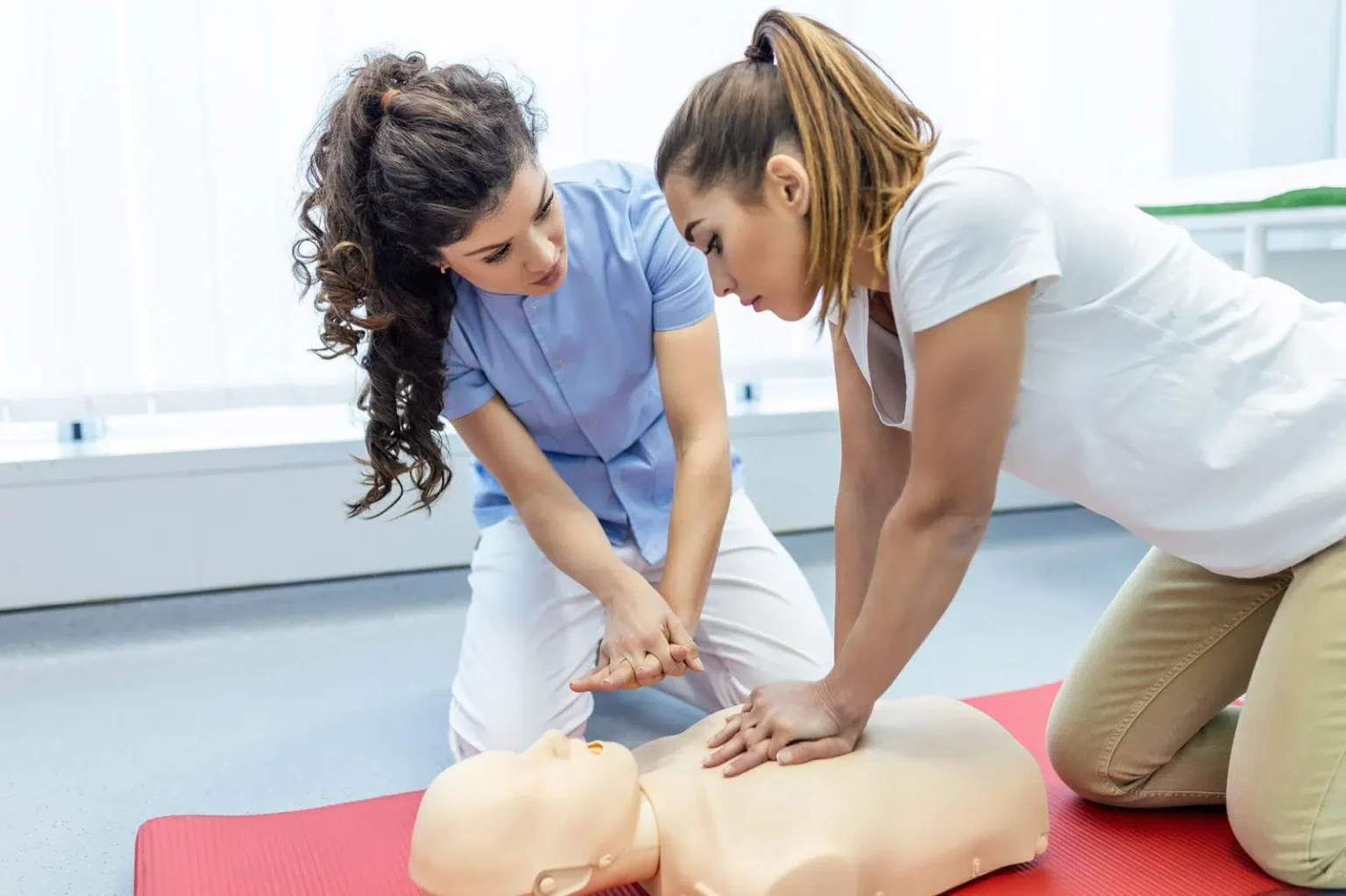Expand your knowledge on becoming CPR certified in the United States with options for online and in-person CPR training and first aid courses. Discover answers to frequently asked questions about the certification process and gain the skills needed to handle emergency situations.
Table of Content: Learn CPR and get certified today.
What Does CPR Mean
CPR (Cardiopulmonary Resuscitation) is a crucial life-saving technique used when someone’s heartbeat or breathing has stopped. Basic life support techniques can save a life by maintaining circulation and breathing until professional help arrives. As Debbie Millar, director of Community Wellness at Penn Medicine Princeton Health, puts it, “Immediate, effective CPR can double or even triple the chances of survival. Early intervention can literally make the difference between life and death” For a step-by-step guide on performing CPR in emergencies, check out the AHA’s CPR Guide.
Benefits of CPR Certification
Being CPR certified offers numerous benefits:
- Life-Saving Skills: Equip yourself to handle cardiac emergencies.
- Professional Edge: Many jobs, especially in healthcare, require CPR certification.
- Personal Confidence: Feel more prepared to assist in emergencies.
Where to Get CPR Certified Online
Online CPR certification courses offer flexibility and convenience, allowing you to complete the theoretical part at your own pace. Many courses include interactive modules, videos, and quizzes to ensure you fully understand the material. Trusted options include:
- American Heart Association (AHA): Offers online courses for CPR, First Aid, and ACLS certification, combining online learning with hands-on skills sessions.
- American Red Cross: Provides blended learning options where you complete coursework online and then attend an in-person skills session.
- National CPR Foundation: Offers entirely online certification courses for CPR, First Aid, and ACLS.
Where to Get CPR Certified In-Person
If you prefer in-person training, there are numerous options available across the United States. In-person classes offer the advantage of hands-on practice under the supervision of experienced instructors, which is crucial for mastering the techniques. Popular locations include:
- Texas, Florida, and Arizona: Both the AHA and Red Cross offer numerous in-person classes, and private training centers also provide certification courses.
- Georgia and Ohio: Community colleges and local health organizations offer CPR certification classes, as do many healthcare facilities and educational institutions.
- Louisiana: Hospitals and community centers frequently host CPR certification classes and first aid training.
- New York City (NYC): You’ll find a wide range of options, including CPR classes through the AHA, Red Cross, and local hospitals.
Step-by-Step Guide to Getting Certified
- Choose a Course: Decide between online and in-person training.
- Enroll: Sign up for a course from a reputable provider like the AHA or Red Cross.
- Complete Training: Finish the theoretical and practical components.
- Pass the Exam: Demonstrate your skills in a final assessment.
- Receive Certification: Get your certification and be prepared to save lives.
Why You Should Get CPR Certified
Being CPR certified can open doors to various job opportunities. Employers often look for candidates with certification as it demonstrates a commitment to safety and preparedness. Here are some specific job roles that benefit from CPR certification:
- Lifeguard: Lifeguard positions typically require both CPR and First Aid certification to ensure readiness for emergency situations.
- School Teacher: Many schools require staff to be CPR certified to ensure student safety during emergencies.
- Babysitter: Parents prefer CPR-certified babysitters for added peace of mind.
- Childcare Worker: CPR certification is often a prerequisite for working in childcare settings.
- Healthcare Professional: Many roles in healthcare, especially those involving direct patient care, require ACLS certification in addition to CPR certification.
Read More: What Are the Best CPR Certifications Online in 2024
Common Questions
- How long does it take to get CPR certified? The duration varies. Online courses can be completed in a few hours, while in-person classes might take a full day or more.
- How old do you have to be to get CPR certified? There is no strict age requirement, but most organizations recommend participants be at least 12 years old.
- What is the price of CPR certification? The cost varies depending on the provider and course type. Online courses range from $20 to $100, while in-person classes cost between $50 and $150.
Resources and Further Reading
- CPR Certification Institute: Offers various CPR certification courses online with comprehensive study materials.
- Mayo Clinic CPR Guide: Provides detailed information on CPR techniques and first aid.
- Health and Safety Institute (HSI): Offers a wide range of CPR, AED, and First Aid training programs.
- CPR and First Aid Training for Schools: The CDC’s guide for implementing CPR and first aid training in schools.
- National Safety Council (NSC): Provides comprehensive first aid and CPR training resources and courses.
Conclusion
Getting CPR certified is a valuable investment in your personal and professional life. Whether you choose an online or in-person course, the skills you gain can make a significant difference in an emergency. Visit the American Heart Association and the American Red Cross websites to find a course that fits your needs.

